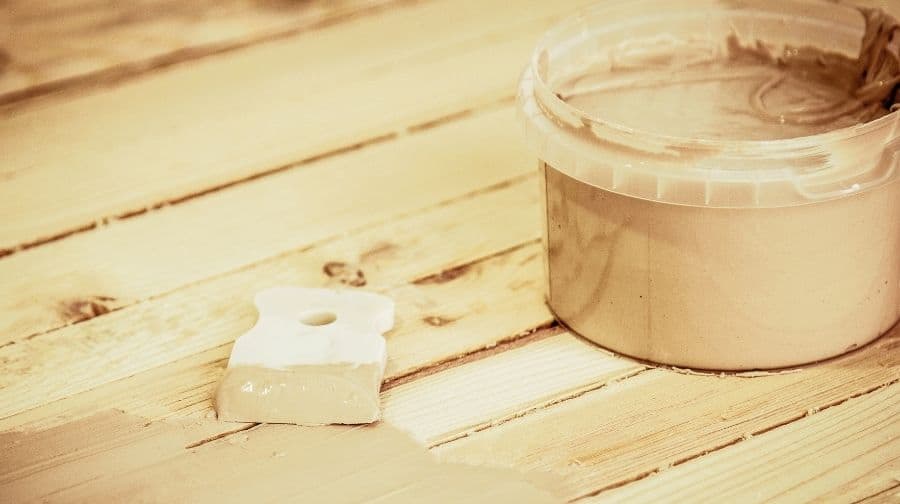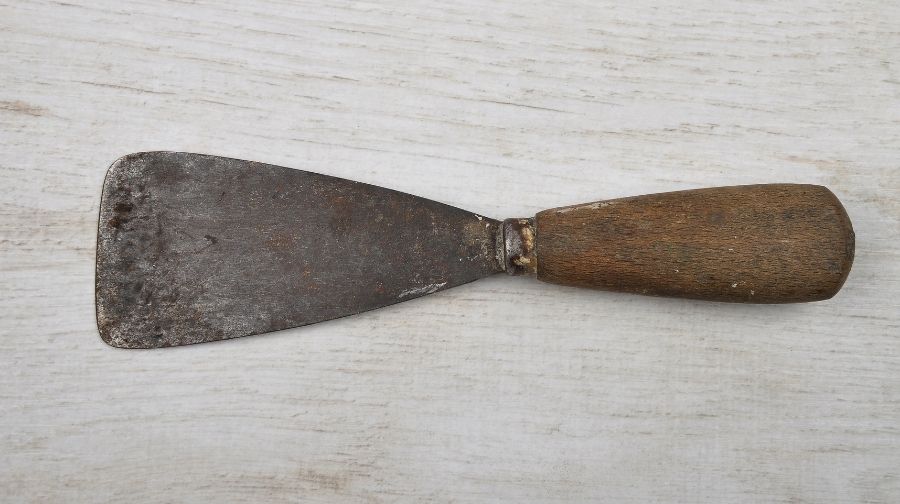
If you’re a woodworker, then you know the importance of wood putty. This material is used to fill in small gaps and cracks in woodworking projects. It’s also used to cover up screws and nails that are visible on the surface of the wood. But does wood putty dry hard? In this blog post, we will explore the answer to that question!
Does Wood Putty Dry Hard?
No wood putty doesn’t fully dry hard, it remains somewhat pliable even after drying for days or weeks. This is normal and doesn’t affect the wood putty’s performance.
Because it doesn’t dry hard it is commonly used in outdoor furniture repairs because it can expand and contract with the weather changes.
It is used more to repair cosmetic repairs like holes or covering nails instead of structural repairs so it’s not meant to firmly dry for structural purposes.
You can add a hardener to wood putty to help it dry harder if you need it too but typically wood putty dries soft.
Why Does Wood Putty Not Harden?
The reason why wood putty does not harden has to do with the way it is made. Wood flour is a very fine powder that is made from wood that has been ground up. This powder is combined with linseed oil, which is a liquid form of petroleum. The combination of these two materials makes it so that the wood putty does not harden.
One thing you can do to make wood putty harden is to add a hardening agent to it. There are a few different types of hardening agents that you can use, but the most common one is called wood glue. You can find wood glue at any hardware store or home improvement store.
To add wood glue to wood putty, all you need to do is mix it in with the putty until it is fully blended. Once you have done this, the wood putty will start to harden within a few hours.
What Is Wood Putty And What Are Its Uses
Wood putty is a type of wood filler that is used to fill in holes, cracks, and other imperfections in wood. It is made from wood fibers, resin, and other materials. Wood putty can be bought pre-mixed or as a powder that you mix with water.
There are many uses for wood putty. It can be used to fill in holes left by nails or screws, to repair cracks in wood, or to fill in gouges. It can also be used to add color or grain to wood. Wood putty is available in many colors, so it can be matched to the wood it will be used on.
Subscribe to Fixing Furniture on YouTube
Tips For Using Wood Putty Correctly
Here are some tips for using wood putty correctly:
– Wood putty should be used on clean, dry wood. Any dirt or debris on the wood will prevent the putty from adhering properly.
– Be sure to knead the wood putty before use. This will help to ensure that it is evenly mixed and of the correct consistency.
– When applying wood putty, use a putty knife to smooth it into the wood. Be sure to fill any holes or cracks completely.
– Allow the wood putty to dry thoroughly, this can take anywhere from a few hours to several days.
By following these tips, you can be sure that your wood putty will adhere correctly and provide a smooth, professional finish.
What Are Some Common Mistakes People Make When Using Wood Putty
Here are some common mistakes people make when using wood putty:
– Not preparing the surface properly before applying the wood putty. This can cause the putty to not adhere properly and can also result in an uneven finish.
– Applying too much wood putty. This can make the repair area more noticeable, rather than less.
– Trying to match the color of the wood putty too closely to the surrounding wood. This can often result in a mismatched look.
If you avoid these common mistakes, you’ll be well on your way to a successful wood putty repair!
How To Fix A Mistake
If you make a wood putty mistake you can simply remove it from the wood with a putty knife and start over. If the mistake is more serious, you may need to remove the wood putty and apply a new layer.




